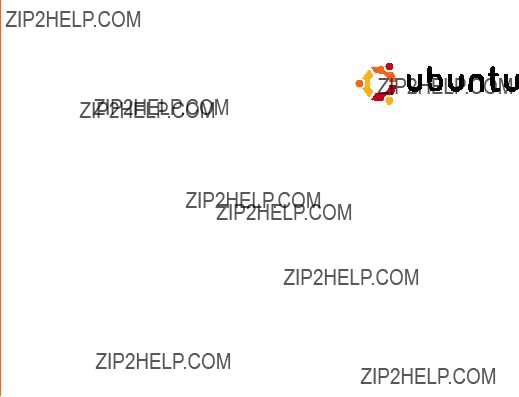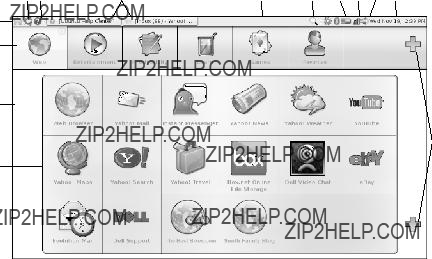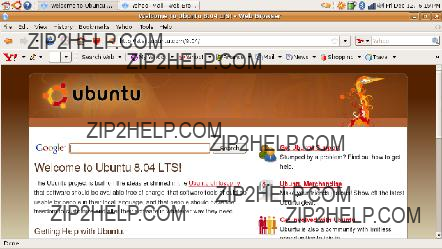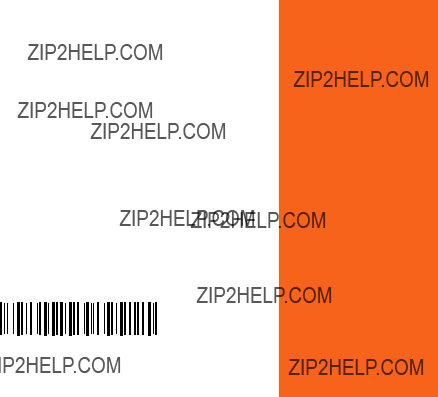
QUICK START???GUIDE

QUICK START???GUIDE


QUICK START???GUIDE

Notes and Cautions
NOTE: A NOTE indicates important information that helps you make better use of your computer.
CAUTION: A CAUTION indicates either potential damage to hardware or loss of data and tells you how to avoid the problem.
__________________
Information in this document is subject to change without notice. ?? 2009 Dell Inc. All rights reserved.
Reproduction of these materials in any manner whatsoever without the written permission of Dell Inc. is strictly forbidden.
Trademarks used in this text: Dell, the DELL logo, and YOURS IS HERE are trademarks of Dell Inc.; Ubuntu and the Ubuntu logo are registered trademarks of Canonical Ltd.
Other trademarks and trade names may be used in this document to refer to either the entities claiming the marks and names or their products. Dell Inc. disclaims any proprietary interest in trademarks and trade names other than its own.
January 2009??? ??? ??? P/N F670R??? ??? ??? Rev. A00
Contents
Overview ????????????????????????????????????????????????????????????????????????????????????????????????????????????????????????????????????????????????????????????????????????5
Getting Started With Your
Dell Desktop ??????????????????????????????????????????????????????????????????????????????????????????????????????????????????????????????????????????????????????6
Getting Started With Your
Classic Desktop ????????????????????????????????????????????????????????????????????????????????????????????????????????????????????????????????????8
Starting an Application ?????????????????????????????????????????????????????????????????????????????????????????????????????? 8 Customizing Your Desktop ?????????????????????????????????????????????????????????????????????????????????????????? 8
Adding and Removing an Application
Icon on Your Desktop ?????????????????????????????????????????????????????????????????????????????????????????????????????????????????? 8
Getting Started With Ubuntu ????????????????????????????????????????????????????????????????????????9
Connecting to the Internet Using
a Wireless or Wired Connection ???????????????????????????????????????????????????????????? 9
Quickly Viewing a Window in
Full Screen ??????????????????????????????????????????????????????????????????????????????????????????????????????????????????????????????????????????????????????????????? 10
System Preferences and
Administration???????????????????????????????????????????????????????????????????????????????????????????????????????????????????????????????????????????????? 11 Browsing Files and Folders ?????????????????????????????????????????????????????????????????????????????? 14
Using the Web Browser ???????????????????????????????????????????????????????????????????????????????????????????????? 16 Instant Messaging With Pidgin ???????????????????????????????????????????????????????????? 18 Using Totem TV ?????????????????????????????????????????????????????????????????????????????????????????????????????????????????????????????????????????? 18 Dell Media Experience ?????????????????????????????????????????????????????????????????????????????????????????????????????? 18 Applications in Ubuntu ?????????????????????????????????????????????????????????????????????????????????????????????????????? 19 Connecting Devices ?????????????????????????????????????????????????????????????????????????????????????????????????????????????????? 20
Restoring Your Ubuntu System ??????????????????????????????????????????????????????22
Starting System Restore ?????????????????????????????????????????????????????????????????????????????????????????? 22
3
???
4
Overview
Overview
Welcome to your Dell??? Inspiron??? Mini.
This guide helps you to get acquainted with the Ubuntu?? operating system, perform basic functions, and set up your computer just the way you want it.
If you need more information, complete documentation on Ubuntu is available from the Help Center on your computer. To access the Help Center, click the Help icon on the Panel, found at the top of your screen.
5

Getting Started With Your Dell Desktop
Getting Started With Your Dell Desktop
The Dell Desktop launches when you turn on your computer.
4
3
2
14
1
6
1Launcher ??? The Launcher organizes applications, bookmarks, folders, and documents into categories. Click a Category, and then click an item to open it.
Customize the Launcher by adding your favorite items to a Category, or even add a new Category ??? using the Plus icons.
2Desktop ???
3Categories ??? Click a category to view a list of applications, bookmarks, folders, or documents.
4Home icon ??? Click this icon to minimize all windows and to display the Launcher.
5Ubuntu icon ??? The Ubuntu icon opens the Ubuntu Menu. From the Ubuntu Menu, access applications, preferences, system commands, system settings, and tools.
6Help icon ??? Click this icon to access the Help Center.
7Running tasks ??? To bring a running task to the foreground, click the corresponding item
on the Panel.
Getting Started With Your Dell Desktop
8Panel ??? The Panel provides quick access to open running tasks on the desktop, or to
9Search icon ??? Click this icon to search for files and folders.
10Battery/Charging status indicator ??? Move the mouse over this icon to view the battery status.
11Network status indicator ??? Click the icon to view the list of available networks. When connected to a wireless network, the icon changes to a series of bars indicating signal strength. The more bars, the stronger the signal.
12Volume control icon ??? Click this icon to adjust the volume of the computer.
13Notification area ??? Includes a clock and icons associated with programs.
14Plus icons ??? Click the upper Plus icon to add a category to the Launcher. Click the lower Plus icon to add applications or website bookmarks.
7

Getting Started With Your Classic Desktop
Getting Started With Your Classic Desktop
To switch from the Dell Desktop Launcher to the Classic Desktop, click ??? Switch Desktop Mode??? Classic Desktop.
Starting an Application
1.Click the Applications menu.
2.Select the appropriate category and application.
Customizing Your Desktop
Personalizing the Panel
You can add frequently used utilities and applications to the Panel by performing the following procedures:
1.
2.Select an application in the Add to Panel dialog box and click Add.
Adding and Removing an Application Icon on Your Desktop
You can add an icon on your Desktop to launch a frequently used application.
1.Select an application in the Applications menu.
2.Drag and drop the application on to the Desktop.
To remove an application icon from your Desktop, drag it into the trash bin.
8

Getting Started With Ubuntu
Getting Started With Ubuntu
Connecting to the Internet Using a Wireless or Wired Connection
Connecting to a Wireless Network
1.To initiate a connection to a wireless network, click the Network Manager icon on the right side of the Panel.
2.Select the network to which you would like to connect. If the network requires a password, the Wireless Network Key
Required screen appears. Enter the network password. Select the Show password checkbox to review your password, if needed.
2.If your network automatically assigns IP addresses and network settings, your set???up is complete.
3.If your network does not automatically assign a network address to your computer, you may configure an IP address on your computer from the Network Administration
screen. Go to ??? System???
Administration??? Network Settings. Use the
IP address and network information provided by your ISP or network administrator.
Connecting to a Wired Network
1.To use a wired network connection, connect the network cable into the network port on the right side of your computer.
9

Getting Started With Ubuntu
Quickly Viewing a Window in Full Screen
Press <Ctrl><Alt><F> to toggle between standard view and full screen view.
10

Getting Started With Ubuntu
System Preferences and
Administration
From the Dell Desktop, use the tools available
from ??? System to control the appearance and operation of your computer.
???Select Preferences for settings of themes, keyboard shortcuts, and power management.
???Select Administration to manage computer monitors and configuration tools functions such as network, printing, and users and groups.
11

Getting Started With Ubuntu
Setting Screensaver Preferences
1.Click ??? System??? Preferences??? Screensaver.
The Screensaver Preferences window appears.
2.In the Screensaver theme list, select Blank for a blank screen, select Random for a random screensaver, or select a screensaver of your choice.
3.Adjust the slider for the length of time that you want your computer to idle before the screensaver appears.
4.Ensure that the Activate screensaver when computer is idle checkbox is selected.
5.If you want the screensaver to lock the screen, select the Lock screen when screensaver is active checkbox.
6.Click Close.
12

Getting Started With Ubuntu
13
Getting Started With Ubuntu
Browsing Files and Folders
The File Manager allows you to view, create, organize, and search for your files and folders using an interface similar to a web browser. To open the file browser from the Dell Launcher, select Productivity??? Places.
Using Bookmarks
Bookmarks in the File Manager are similar to bookmarks in a web browser. Use the bookmarks feature to help you quickly open frequently used folders.
To add a bookmark
1.Browse to the folder that you want to bookmark, and open it.
2.Click Bookmarks??? Add Bookmark or press <Ctrl><D>.
The bookmark appears in the Bookmarks menu and in the lower portion of the side pane.
14
Creating a New Folder
1.Browse to the location where you want to create the new folder.
2.Click File??? Create Folder, or right- click and select Create Folder, or press <Shift><Ctrl><N>.
3.Name the folder and press Enter.

Getting Started With Ubuntu
15

Getting Started With Ubuntu
Using the Web Browser
You can browse the web using the web browser. The search box allows you to search the web directly from the toolbar. Tabbed browsing means you can have multiple pages open, but contained within the same browser window.
Using Tabbed Browsing
To open a new tab, go to File??? New Tab or press <Crtl><T>.
To close a tab, click the close button on the tab or press <Ctrl><W>.
Using Bookmarks
1.To bookmark a page, click Bookmarks??? Bookmark This Page or press <Ctrl><D> or to bookmark a group of tabs, select
Bookmarks??? Bookmark All Tabs.
2.Select a folder for the bookmark and click Add.
Bookmarks saved to the Bookmarks Toolbar Folder appear on the Bookmarks Toolbar.
3.To organize and edit your bookmarks, click
Bookmarks??? Organize Bookmarks.
Adding Bookmarks to the Launcher
If you have the Dell Desktop enabled, you can add web site bookmarks to the Launcher from within the web browser.
1.To add a bookmark to the Launcher, choose one of the following methods:
Launcher
2. Select a category and click Apply.
16

Getting Started With Ubuntu
17
Getting Started With Ubuntu
Instant Messaging With Pidgin
The Pidgin messaging client allows you to use multiple types of instant messaging accounts and protocols all at once.
1.From the Dell Launcher, select
Web??? Instant Messenger.
2.If you are opening Pidgin for the first time, in addition to your Buddy List, an Accounts dialog box prompts you to add accounts.
Click Add.
3.Select the Protocol of the account that you want to add, enter the required information, and click Save.
4.Close the Accounts dialog box and, optionally, the Buddy List.
To access the Pidgin menu options,
18
Using Totem TV
If your computer includes the optional TV tuner/ antenna, you can use the Totem TV player to watch digital TV:
1.From the Dell Launcher, select
Entertainment??? TV Player.
2.Totem TV automatically presents a scan dialog. Choose
3.After scanning completes,
Dell Media Experience
For the best multimedia experience, Dell provides PowerCinema ??? a media player for Music, Video, Photos, and Movies. To view DVD movies, the portable Dell CD/DVD Player and PowerDVD software are required.
To use Dell Media Experience, select
Entertainment??? Dell Media Experience from the Dell Launcher.

Applications in Ubuntu
Ubuntu comes with a wide variety of
Some of the most frequently used applications include the following:
Getting Started With Ubuntu
Adding and Removing Applications
1.Click ??? Applications??? Add/Remove.
2.To add an application, select the required application checkbox. To remove an application, deselect the required application checkbox.
3.Some applications may require additional supporting applications or will be a part of a bundle. If you still want to install/remove the application, click Install All/Remove All in the confirmation window.
4.When you have finished making changes, click OK.
5.Check the list of changes you have made in the confirmation window and click Apply.
6.Progress windows appear while downloading, installing, and removing applications. Once the processes finish, the
Changes Applied window appears.
7.Click Close.
19
Getting Started With Ubuntu
Connecting Devices
Ubuntu supports a wide range of peripheral devices and lets you connect to them easily.
USB Drives
1.Connect storage devices like USB hard drives or pen drives to an available USB port on the computer
2.The drivers are automatically installed and the File Browser window appears.
3.You can now transfer files between your computer and the storage device.
20
Digital Cameras
1.Connect your digital camera to an available USB port on the computer.
2.Turn on the camera and place it in review or file transfer mode.
3.On the screen that appears, choose
4.Select the photo(s) and the location to transfer the photos.
5.Click Copy and the photos are transferred to the selected location.

Bluetooth Devices
1.From the Panel,  and select Connect new device...
and select Connect new device...
2.The Bluetooth Device Wizard screen appears. Click Forward.
3.The detected Bluetooth devices are listed. Select the device you wish to use and click
Forward.
4.A PIN code may be necessary to establish connection. On the Bluetooth device, enter the PIN code displayed on your computer screen, and you are connected (paired).
Getting Started With Ubuntu
5.The Successfully configured new device message appears. Click Close.
6.To transfer or browse files,
Bluetooth icon and select Send files to
device... or Browse files on device...
21

Restoring Your Ubuntu System
Restoring Your Ubuntu System
Use the Ubuntu LTS DVD that shipped with your computer to restore your operating system.
CAUTION: Using the Ubuntu LTS DVD deletes all data on the hard drive.
NOTE: Your computer may or may not have an optical drive. Use an external optical drive or any external storage device for the procedures that involve media.
Starting System Restore
1.Turn off the computer.
2.Connect an external USB optical drive into an available USB connector on your computer.
3.Insert the Ubuntu LTS DVD in the external USB optical disc drive.
CAUTION: Using the Ubuntu LTS DVD deletes all data on the hard drive.
22
4.Turn on the computer.
5.When the DELL logo appears, press <F12> immediately.
NOTE: The next steps change the boot sequence for one time only. On the next
6.When the boot device list appears, highlight
7.Press any key to Boot from


Printed in China.
Printed on recycled paper.
www.dell.com | support.dell.com
0F670RA00